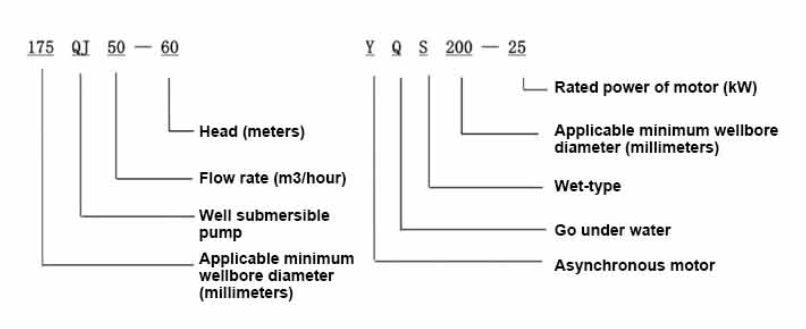Dec . 04, 2024 10:39 Back to list
how to remove a submersible water well pump
How to Remove a Submersible Water Well Pump
Removing a submersible water well pump can seem like a daunting task, especially for those without extensive knowledge of plumbing or electrical systems. However, with the right tools, safety precautions, and a step-by-step approach, you can successfully extract the pump yourself. Below is a comprehensive guide on how to do this.
Understanding the Components
Before diving into the removal process, it is essential to understand the components involved in a submersible water well pump system. The primary parts include the pump itself, the electrical wiring, the discharge pipe, and check valves. The pump is typically located several feet underground within the well casing, and it is connected to a power source and the plumbing system.
Safety Precautions
Safety should always be your top priority when dealing with electrical and water systems. Start by turning off the power supply to the well pump from the circuit breaker to avoid any electrical shocks. Additionally, ensure you wear rubber gloves and safety goggles to protect yourself from injuries and contamination.
Tools Required
You will need several tools to remove the submersible pump, including
- A wrench - Pliers - A bucket or container for any water that may spill - A hoist or a sturdy rope (if the pump is deep)
Step-by-Step Guide
1. Turn Off the Power As mentioned, ensure that the power to the well pump is shut off at the circuit breaker. This step is crucial for your safety.
how to remove a submersible water well pump

2. Locate the Well Cap Find the well casing or well cap, which is usually situated at ground level. Remove any coverings or debris that may be obstructing the area.
3. Disconnect Electrical Wiring Carefully disconnect the electrical wires from the pump. If you're unsure about which wires to disconnect, take a photo or make a note of how they are connected. This information will be helpful when you are ready to install the new pump.
4. Detach the Discharge Pipe Locate the discharge pipe which carries the water from the pump to your home. Use a wrench to loosen and remove the connections at the top of the pipe. Be prepared for some water to spill out, so have a bucket ready to catch it.
5. Preparing to Pull the Pump Find a suitable hoisting device or sturdy rope to pull the pump from the well. Attach the device securely to the pump. Ensure that the rope or hoist is rated for the pump’s weight and is properly anchored above the well.
6. Pulling the Pump With everything disconnected, begin pulling the pump slowly and steadily out of the well. If the pump is heavy or stuck, do not force it; instead, check for any remaining attachments or obstructions before attempting to pull it again. It may be helpful to have a second person assist.
7. Inspecting the Pump Once you have successfully removed the pump, take a moment to inspect it for any visible damage or wear. This inspection is essential in determining whether the pump needs repairs or complete replacement.
8. Clean the Well Casing Before installing a new pump or replacing the old one, clean the well casing as needed. Removing sediment or debris can help improve the efficiency of the new pump.
9. Installation of New Pump If you are replacing the old pump, follow the manufacturer's instructions for installing the new unit. Ensure all connections (electrical and plumbing) are secure.
10. Testing Once the new pump is in place and connected properly, restore power and check the system for any leaks or operational issues.
Conclusion
Removing a submersible water well pump can be accomplished efficiently with the right tools and precautions. Whether you choose to replace it or perform maintenance, following these steps can help ensure a successful outcome. If you encounter any circumstances beyond your expertise during the process, don’t hesitate to seek professional help. With patience and care, your water well system will be back in order, providing you with the essential water supply you need.
-
Submersible Water Pump: The Efficient 'Power Pioneer' of the Underwater World
NewsJul.01,2025
-
Submersible Pond Pump: The Hidden Guardian of Water Landscape Ecology
NewsJul.01,2025
-
Stainless Well Pump: A Reliable and Durable Pumping Main Force
NewsJul.01,2025
-
Stainless Steel Submersible Pump: An Efficient and Versatile Tool for Underwater Operations
NewsJul.01,2025
-
Deep Well Submersible Pump: An Efficient 'Sucker' of Groundwater Sources
NewsJul.01,2025
-
Deep Water Well Pump: An Efficient 'Sucker' of Groundwater Sources
NewsJul.01,2025
-
 Submersible Water Pump: The Efficient 'Power Pioneer' of the Underwater WorldIn the field of hydraulic equipment, the Submersible Water Pump has become the core equipment for underwater operations and water resource transportation due to its unique design and excellent performance.Detail
Submersible Water Pump: The Efficient 'Power Pioneer' of the Underwater WorldIn the field of hydraulic equipment, the Submersible Water Pump has become the core equipment for underwater operations and water resource transportation due to its unique design and excellent performance.Detail -
 Submersible Pond Pump: The Hidden Guardian of Water Landscape EcologyIn courtyard landscapes, ecological ponds, and even small-scale water conservancy projects, there is a silent yet indispensable equipment - the Submersible Pond Pump.Detail
Submersible Pond Pump: The Hidden Guardian of Water Landscape EcologyIn courtyard landscapes, ecological ponds, and even small-scale water conservancy projects, there is a silent yet indispensable equipment - the Submersible Pond Pump.Detail -
 Stainless Well Pump: A Reliable and Durable Pumping Main ForceIn the field of water resource transportation, Stainless Well Pump has become the core equipment for various pumping scenarios with its excellent performance and reliable quality.Detail
Stainless Well Pump: A Reliable and Durable Pumping Main ForceIn the field of water resource transportation, Stainless Well Pump has become the core equipment for various pumping scenarios with its excellent performance and reliable quality.Detail
